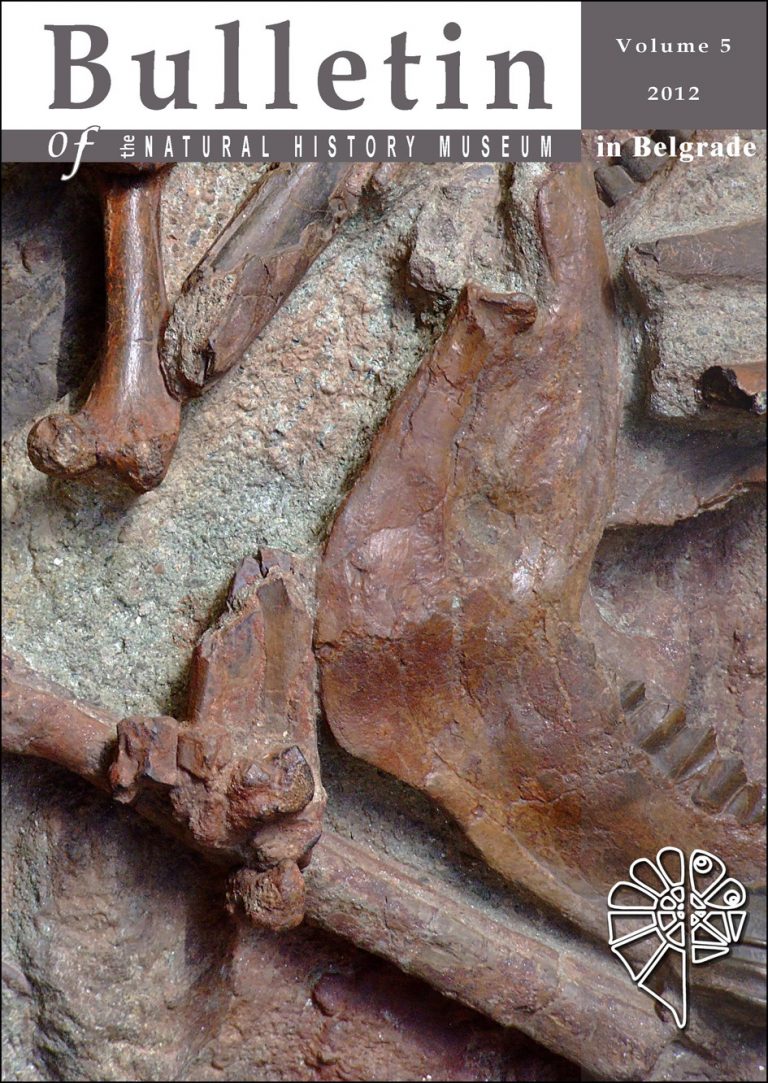
Geology
Marković, Z., Alaburić, S., Milivojević, M., Lović, A.
Geoconservation of the paleontological site “Prebreza”
The fossiliferous locality “Prebreza” is the first paleontological site in Serbia declared as cultural heritage of the first category. Based on the assessment of current site-condition and its potential in terms of science, education, conservation and tourism, experts from the Natural History Museum in Belgrade propose guidance for sustainable and wise use of the site.
Key words: Conservation, fossil mammals, Gluvi Potok, Prebreza
Čkonjević, B., Radović, P.
Deinotherium giganteum from Adrani, Central Serbia
This paper reports an accidental find of Deinotherium giganteum left M3 crown in Adrani near Kraljevo, central Serbia. The specimen was found in fluvial deposits of the Zapadna Morava River. This is the second find of Deinotherium giganteum in the vicinity of Kraljevo. Together with other remains of proboscides (Tetralophodon longirostris), it confirms the presence of Tertiary large mammals fauna in Kraljevo region, probably in the context of an open forest or woodland environment.
Key words: Deinotherium giganteum, molar, Kraljevo, Central Serbia
On January 6, 1912 at the Senckenberg Museum in Frankfurt on Main, a completely new concept of the origin of the Earth’s continents was presented to the scientific community. It was a very brave speech by the German meteorologist and polar explorer Alfred Wegener at the session of the geologists association and news of it spread quickly first through Germany, later the rest of the Europe, and finally worldwide. However, like some other revolutionary ideas, the controversial notion was almost completely rejected. It needed half a century and the development of science, techniques and new methods for his idea to be accepted. Today, the concept of continental drift by Alfred Wegener represents one of the most important cornerstones of the theory of plate tectonics, a widely accepted model of the origin of continents and oceans. Additionally, it provoked and initiated the development of many other disciplines, primarily in the field of geosciences, and strongly influenced the overall development of human society in the second half of the twentieth century.
Key words: Alfred Wegener, continental drift, sea floor spreading, plate tectonics, geosciences, human society
Biology
Perić, R., Jakovljević, K., Stojšić, V., Vukojičić, S.
Pančić’s specimens in the Herbarium collection of Andreas Rafael Wolny
The herbarium collection of Andreas R. Wolny in the Gymnasium of Sremski Karlovci contains the specimens of well-known Serbian botanist Dr. Josif Pančić, who donated them during and after his visit to the Gymnasium. Also, one small part of the specimens from this collection is deposited in the herbarium of the Institute for Nature Conservation of Vojvodina Province in Novi Sad. A list of 281 herbarium sheets with 295 taxa is presented for the first time to the botanical community, with detailed information on where and when the plants were collected, and notes on the specimens and revision data.
Key words: herbarium collection, Josif Pančić, Andreas R. Wolny, Gymnasium of Sremski Karlovci
Nahirnić, A., Tarmann, G. M., Jakšić, P.
Zygaenidae (Lepidoptera) in the collections of the Natural History Museum in Belgrade (Serbia)
The collections of the Natural History Museum in Belgrade comprise 804 specimens representing 23 species of Zygaenidae, thirteen of which belong to the subfamily Zygaeninae and ten to the Procridinae. The examined material was collected in the territory of the former SFR of Yugoslavia, mostly in Serbia, between 1922 and 1996. Two species, viz. Zygaena (Mesembrynus) cynarae (Esper, 1789) and Zygaena (M.) punctum Ochsenheimer, 1808, are recorded for the first time for the fauna of Serbia. Zygaena (M.) punctum is also recorded for the first time for Montenegro.
Key words: Zygaenidae, former SFR of Yugoslavia, Serbia, Natural History Museum, Belgrade
History of Serbian Science
Dinić, A.
The most important researchers of forests in Serbia


